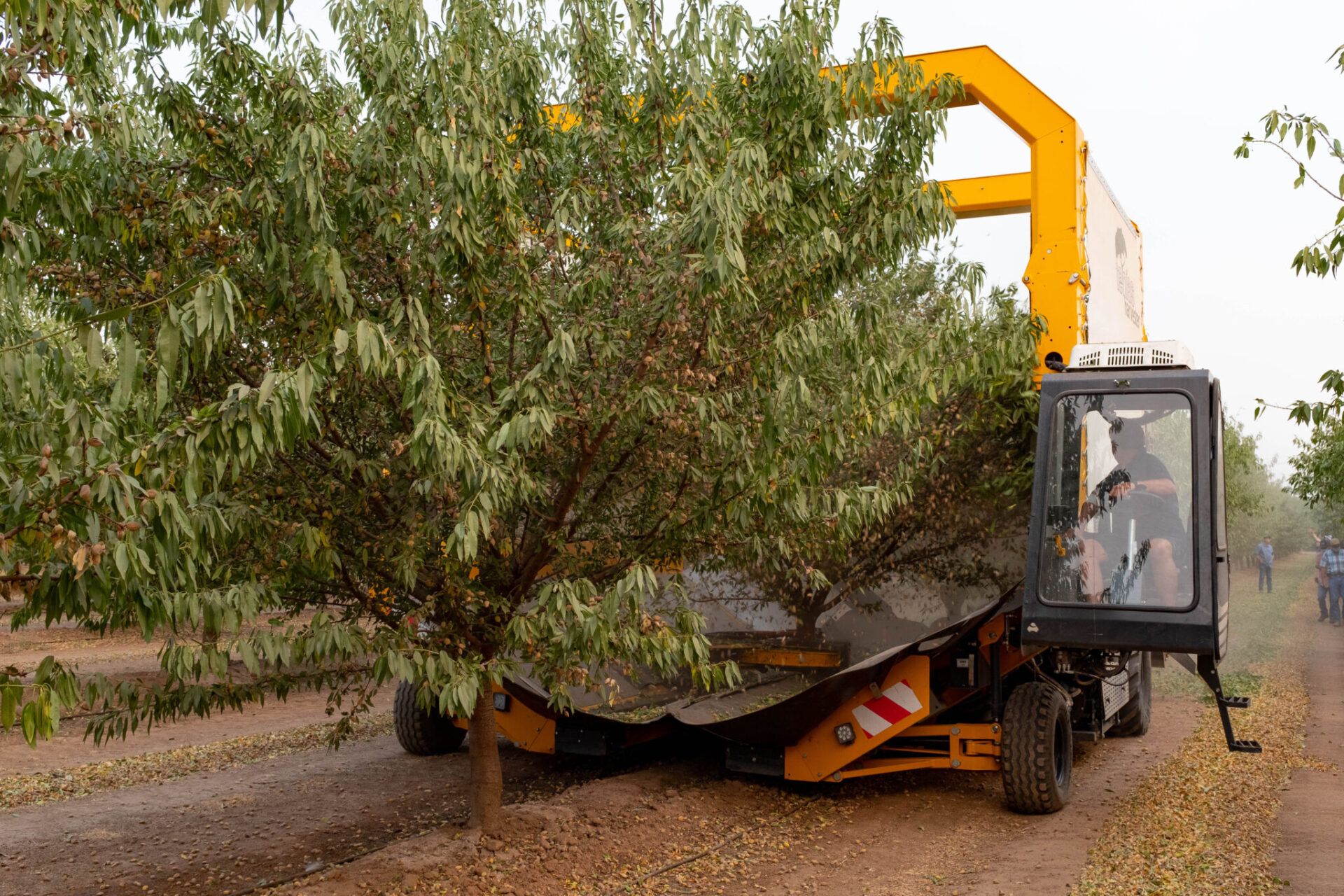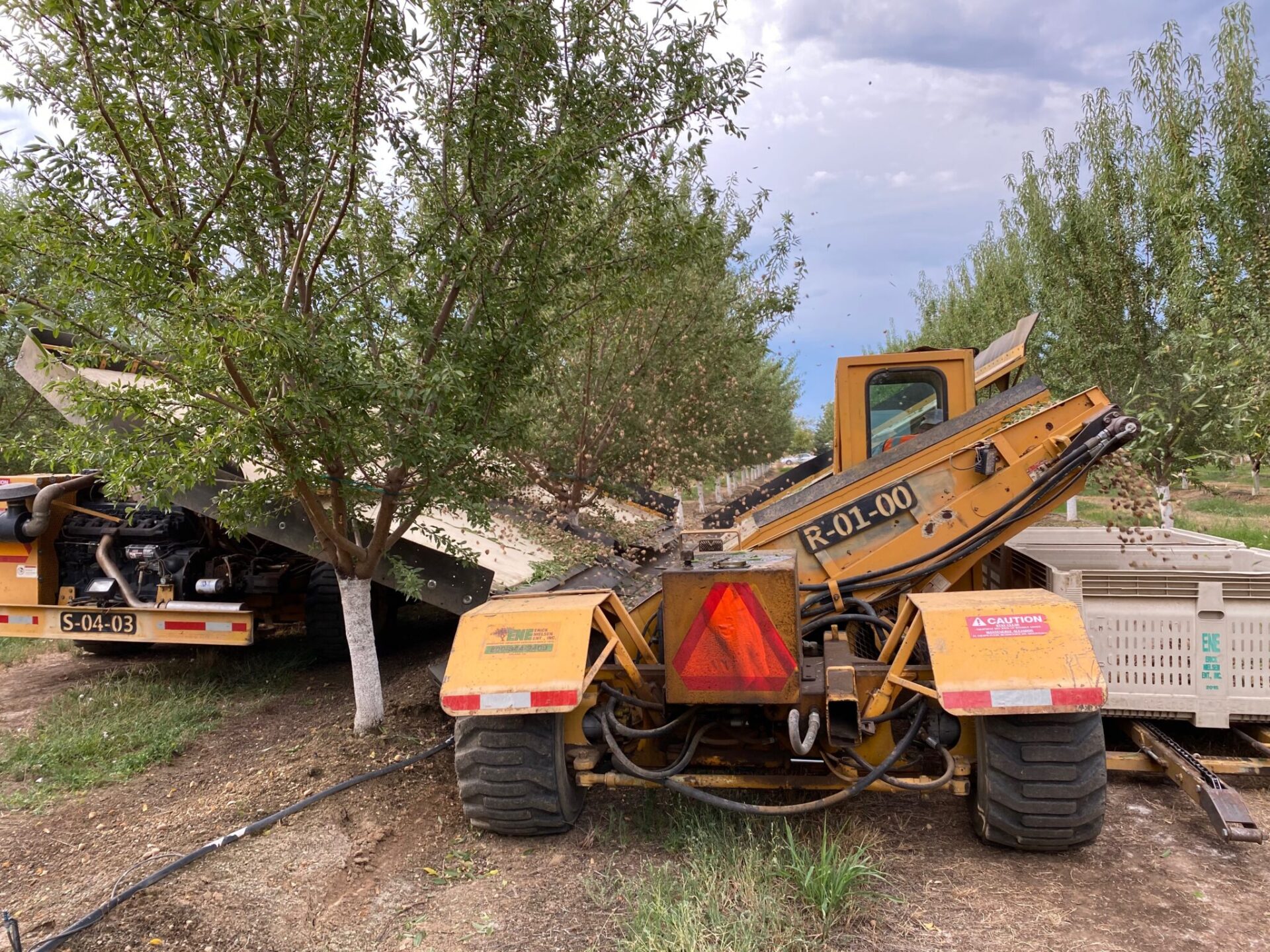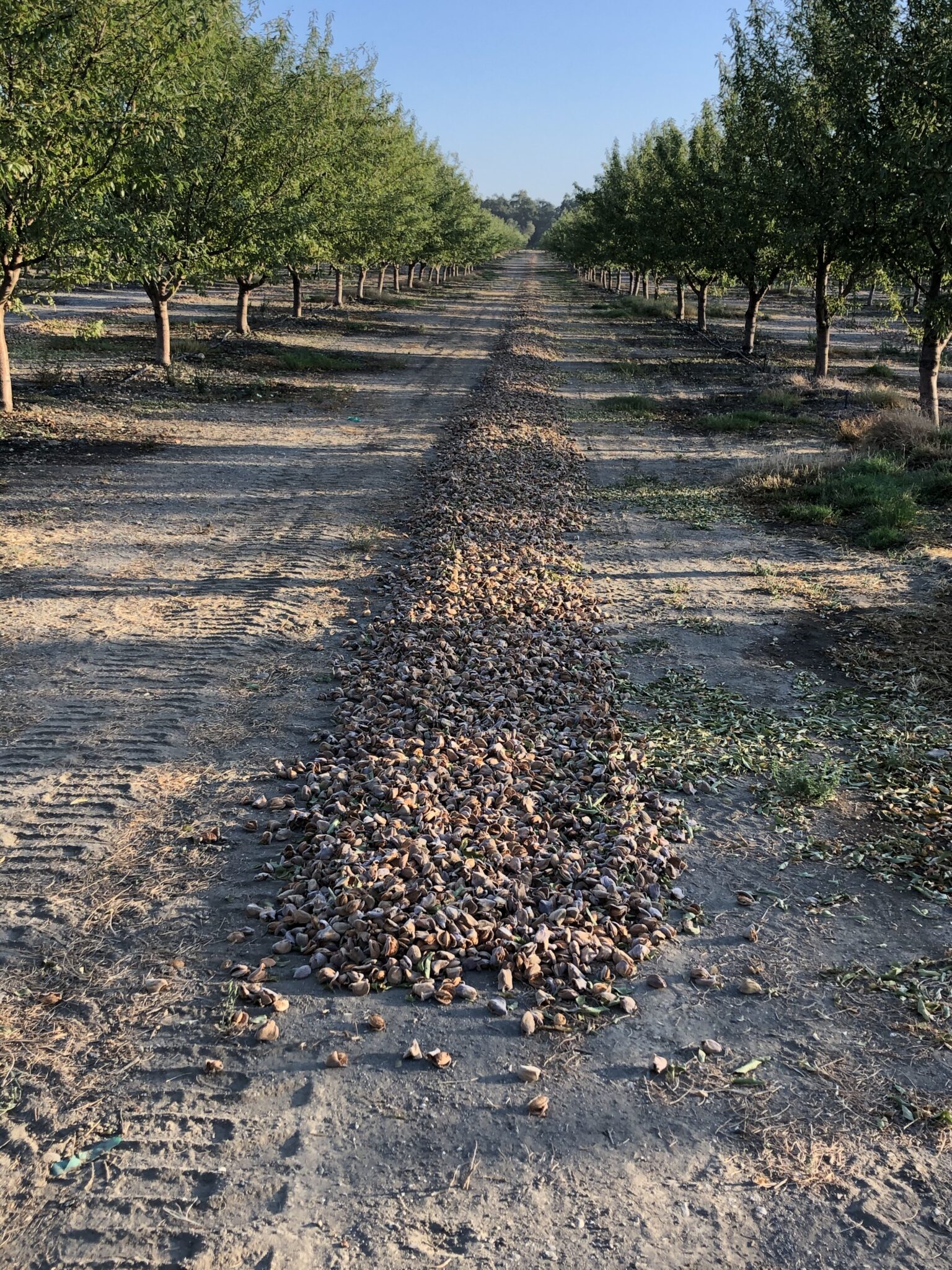
When it comes to advancement of off-ground almond harvest, a multitude of advantages have been presented for the state’s 1.6 million acres of almonds in California.
Dust reduction, improved product quality due to less insect damage, flexibility in irrigation scheduling, less orchard floor management and cleaner product delivered to processors are a some of the “pros” listed by proponents of off-ground almond harvest.
But are the state’s almond growers, custom harvesters and equipment manufacturers ready for such a monumental change?
“We’re marching toward it. We will see what the transitional period looks like,” said Turlock-area almond grower Brian Wahlbrink.
Wahlbrink is chairman of the Almond Board of California’s (ABC) harvest workgroup and moderated a panel discussion on off-ground almond harvest at last year’s virtual Almond Conference. The ABC workgroup consists of almond growers and equipment manufacturers who are exploring alternative harvest methods and their cultural and economic realities.
Wahlbrink said he is excited about the possibilities of off-ground almond harvest but acknowledges that there are many components to this system that must be taken into consideration by the almond industry.
“A lot of things must happen for this to become realization.”
Obstacles to Overcome
Drying a greener crop appears to be the main obstacle to a mass move to off-ground harvest. Nuts would be shaken at a higher moisture level and would need to be dried prior to processing or stockpiling. Two options are mechanical drying or moving harvested nuts to an off-site lot to dry. Energy costs for mechanical drying and capacity to handle tonnage that increases every year are often cited as challenging for the almond industry.
Growers, farm managers and custom harvesters voiced concerns about adopting off-ground harvest in the short term, but acknowledge that labor saving could be an attractive incentive.
Over the last decade, innovations in almond harvesting equipment design have contributed to dust reduction. Use of conditioners have helped shorten drying times of windrowed nuts in the orchard and produced a cleaner product delivered to the processor. Improved orchard floor management and irrigation management are also playing a part in the industry’s quest for dust reduction.
If the next step for the almond industry is shake-and-catch and alternative drying options, growers and harvest operators have questions on feasibility and affordability of a new harvest method.
What the almond industry can do approaching transition, Wahlbrink said, is to understand the path to off-ground won’t be a straight or short line. Drying a greener crop, tree heights, orchard design, different maturity dates for different varieties in the same orchard, equipment availability and cost are all challenges to be overcome in the harvests ahead.
Almond growers and custom harvest operators point out that costs of new machinery would be a deterrent in the short term. There would need to be enough acres of orchards that could be harvested off-ground to justify the costs.
Corey Edwards, an almond grower and custom almond harvester in the San Joaquin Valley, said a constant concern is the life span of his equipment as more environmental mandates are made.

“Will it be good for five years, or just two to three?” he asks.
On the ‘pro’ side, Edwards said that if the current labor situation persists, off-ground harvest operations, which will need fewer machine operators, could be a driver for off-ground harvest adoption.
Edwards harvests almonds for Riverdale grower Mark Borba, who said the expense of new harvest machinery would be weighed against lower labor costs. Most growers do not want to take on higher expenses for new machinery and would have to have the acreage to justify it. The drive for him would be labor costs, he said, but there are economic realities with nut prices and new machinery investment.
Billy Schuh, an almond grower who also harvests 3,000 acres of almonds annually, said from an environmental perspective, using the sun to dry almonds in the orchard remains the best option.
“Moving the nuts to the middles where the most sun hits them is using clean energy,” he said. “There is no cost to that.”
Where he harvests in the Central Valley, Schuh said sweepers are about six hours behind the shakers and conditioners run the next day. Their slow fans take out leaves, dirt and other debris, leaving a cleaner windrow for harvest machines.
The issue of mechanical drying versus allowing nuts to dry on the ground raises questions about costs and capacity. Wahlbrink said until the mechanical drying issue can be resolved, one alternative being explored involves shake-and-catch, but dropping the nuts in a windrow on a barrier that keeps them from touching the ground. There, the nuts can dry until they are picked up. If this proves to work, he said it might bring more growers on board with off-ground harvest.
Limited drying capacity by processors is a major challenge to off-ground harvest adoption. Wahlbrink said he is not a fan of mechanical drying, and that issue has to be resolved for grower buy-in.
There will be other innovations accompanying off ground harvest, he predicted.
Tree height in current orchards will be a challenge for harvest equipment, Wahlbrink said. First scaffolds in many orchards are too low for harvest equipment to reach under. Scaffolds will need to be in the 26- to 28-inch range for off-ground harvest. Edwards said tree size could also make it difficult to catch all the nuts at shaking. Growers would need to prune, much like pistachio growers, to adapt for catch frames. With almond orchards cycling out at 20 to 25 years, those challenges could eventually be overcome, he said.
Manufacturers of harvest equipment are engaged in the process, but it will take enough acres in the ground and grower interest for significant investment. Almond Board, Wahlbrink said, is conducting research on costs and benefits to incentivize further equipment design.

Early Harvest Benefits
Almond harvest could begin earlier with off-ground equipment, possibly saving growers pest control costs with late navel orangeworm sprays. Research has shown an earlier harvest could limit hull rot infections. Wahlbrink said shaking trees two weeks prior to normal harvest would cut down on navel orangeworm damage. Concerns about losing windfall nuts prior to harvest could be mitigated with earlier harvest.
Timing will be critical with off-ground harvest, said retired farm manager Robert Gulack. While working for Olam Orchards in Australia, Gulack became familiar with off-ground almond harvest, noting it was used on the company’s 30,000 acres to prevent damage in rainy conditions.
Gulack said if there is more than one variety in the orchard, harvest timing for the earliest maturing variety could leave later maturing nuts still on the tree, negating the advantage of one-pass harvest. Going later could mean some loss of early crop nuts to windfall.
High-moisture nuts had to be stockpiled, he said, and that presented kernel quality issues. Gulack said they used forced air under the tarps in an attempt to prevent degradation, but quality issues remained.
“There are a few challenges to off-ground, but there is interest,” he said.















